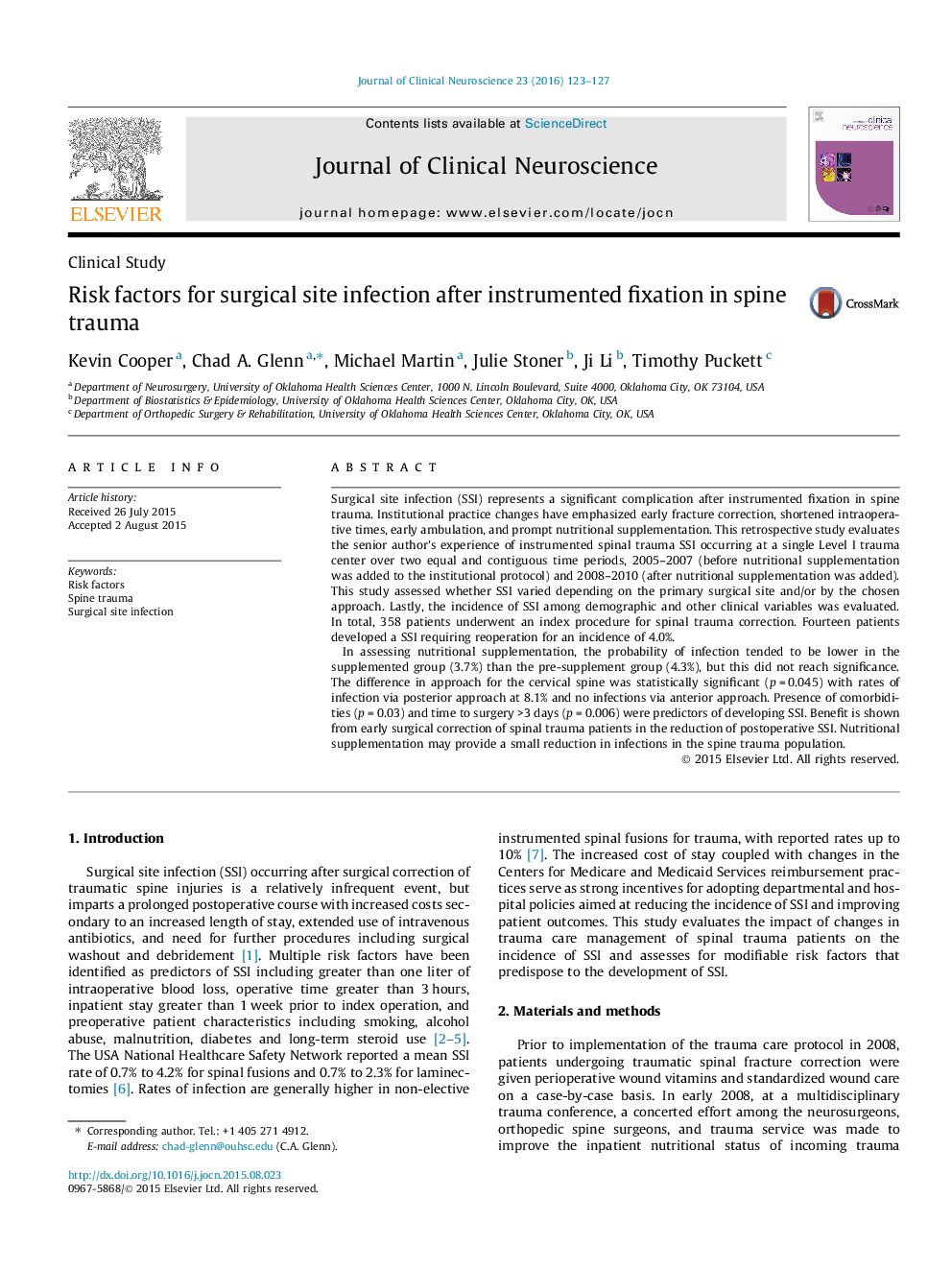| کد مقاله | کد نشریه | سال انتشار | مقاله انگلیسی | نسخه تمام متن |
|---|---|---|---|---|
| 3058487 | 1580293 | 2016 | 5 صفحه PDF | دانلود رایگان |
Surgical site infection (SSI) represents a significant complication after instrumented fixation in spine trauma. Institutional practice changes have emphasized early fracture correction, shortened intraoperative times, early ambulation, and prompt nutritional supplementation. This retrospective study evaluates the senior author’s experience of instrumented spinal trauma SSI occurring at a single Level I trauma center over two equal and contiguous time periods, 2005–2007 (before nutritional supplementation was added to the institutional protocol) and 2008–2010 (after nutritional supplementation was added). This study assessed whether SSI varied depending on the primary surgical site and/or by the chosen approach. Lastly, the incidence of SSI among demographic and other clinical variables was evaluated. In total, 358 patients underwent an index procedure for spinal trauma correction. Fourteen patients developed a SSI requiring reoperation for an incidence of 4.0%.In assessing nutritional supplementation, the probability of infection tended to be lower in the supplemented group (3.7%) than the pre-supplement group (4.3%), but this did not reach significance. The difference in approach for the cervical spine was statistically significant (p = 0.045) with rates of infection via posterior approach at 8.1% and no infections via anterior approach. Presence of comorbidities (p = 0.03) and time to surgery >3 days (p = 0.006) were predictors of developing SSI. Benefit is shown from early surgical correction of spinal trauma patients in the reduction of postoperative SSI. Nutritional supplementation may provide a small reduction in infections in the spine trauma population.
Journal: Journal of Clinical Neuroscience - Volume 23, January 2016, Pages 123–127
